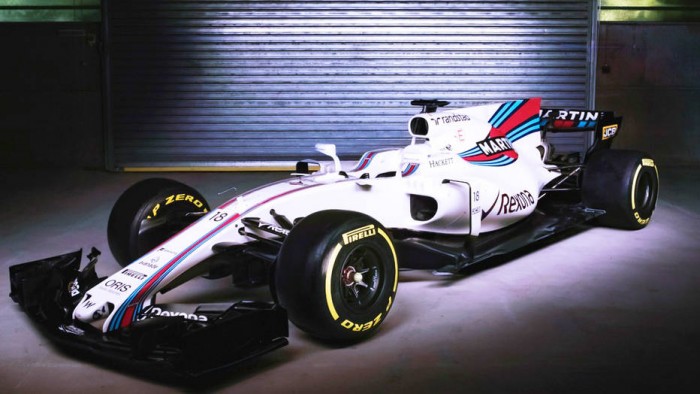In the context of the mini Williams revival, 2016 was a disappointing season.
Just one podium was hauled and the team slipped from third in the constructors', to fifth, being leaped by both Red Bull and Force India.
Moreover, technical chief Pat Symonds left the team at the season's end, as it Valtteri Bottas, being selected as Nico Rosberg's replacement.
However, they have a new young driver who was the class of the field in Formula 3, in Lance Stroll - not to mention a lorry load of cash - and popular Brazilian Felipe Massa unretired, when the Bottas move was confirmed.
In the biggest coup of the winter, Williams have secured the services of Paddy Lowe, the former Mercedes executive director technical.
Lowe is experienced in getting the best of a technical department and will be sure to bring fresh and forward thinking to the team.
The Car
The car officially unveiled on Saturday is nearly identical to the one that was released last week.
However, one significant difference is the size of the shark-fin on the engine cover.
This has been made bigger and more profound.
Aside from this, the car largely remains the same to the launch-spec.
The front-wing remains basic and aside from some fins on the top of the side-pods, the area around the cockpit remains aerodynamically weak.
Development of the barge-boards will be crucial to success for all teams this season, and at least Williams have a scope development scope in this area.
The Drivers
The team leader at Williams is now Brazilian Felipe Massa, who retired at the end of last season, and then did a u-turn.
Massa was effectively forced out as Williams wanted to have a Bottas-Stroll partnership, and the financial rewards that would go with such a line-up.
He always said he would race in 2017, and the likeable Sao-Paulo native will be crucial to Williams' success this season and into the future.
A veteran of 250 Grand Prix, Massa's insight will help the team push forward with development, Moreover, he will be able to be a good teacher for his rookie team-mate.
Massa's fourth season at Grove, may just well turn out to be his most important.
Lance Stroll, at 18 is not the youngest driver in F1. But that is not to say he isn't ready.
Throughout 2016, he conducted a series of private tests in a Williams FW36 from 2014, and is the most well prepared rookie in the sport since Lewis Hamilton.
In 2016, he was the class of the field in Formula 3, and was able to claim the title.
The Canadian is not naive when it comes to realising the magnitude of the challenge he faces, but is confident that he is ready.
As the old adage goes, if you're fast enough, you're old enough.
What can they achieve this season?
Still powered the class of the field Mercedes Power Unit, Williams will still be near the top of the timing sheets and score big points on occasions.
The key will be maintaining and bringing impactful aerodynamic developments.
Under Lowe's stewardship, the benefits will not be felt until late in the season, which could coincide with a late surge in the constructors'.
2017 will more than likely be a consolidating year for the team.
Did You Know?
Despite winning 7 driver championships, in 1980, 1982, 1987, 1992, 1993, 1996 and 1997, Williams have only ever had the 'Number 1' on their cars for three seasons.
Those were in 1981, 1983 and 1998, when Alan Jones, Keke Rosberg and Jacques Villeneuve carried the number.
Nelson Piquet left the team after his '87 triumph, whilst Nigel Mansell and Alain Prost both retired after winning the crown. Damon Hill was forced out during his successful '96 winning campaign.









































